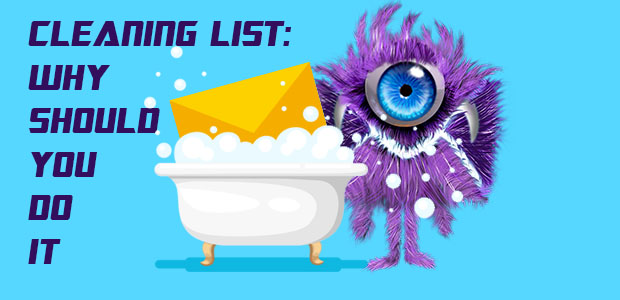Do you need to clean up your email list and don’t know where to start?
Perhaps you have noticed that your email campaigns are not reaching the inbox or have a low open rate.
Don’t worry, cleaning your contacts is the right recipe to do it! In this article we will teach you how to remove contacts that are not interested, irrelevant or disconnected.
How does debugging your email contact list help you?
You may think that having a greater number of contacts regardless of their relevance will not affect the results, and that, on the contrary, it could increase the reach of the email. This is possible but the cost could be higher if it affects your reputation and your ability to deliver.
Here are some of the benefits of having a clean contact list:
- Less hard bounces. Debugging subscribers also reduces bounces from bad email addresses. The reduction in bounce rates in turn, improves your sender’s reputation because it will tell ISPs (Internet Service Providers) that you are respecting recipients’ inboxes instead of spamming them.
- Delivery capacity. Having fewer bounces translates to greater deliverability for your entire subscriber base.
- Segmented and relevant contacts. It’s important to give your contact list a good scrub every now and then to create a more relevant list of compromised contacts. This will allow you to focus on subscribers or customers who really have an interest in your product.
- Higher open rate. Regularly cleaning your list will increase your overall marketing email engagement rates, allowing you to have more meaningful relationships with subscribers. Most importantly, you’ll have higher conversion rates and a more engaged audience, which equates to higher revenue and overall customer satisfaction.
Some companies never delete their emails because they assume there is no additional charge for sending an email to one more person, but this is not the case. The cost of not cleaning a database can include: damage to your sender reputation from email bounces, unsubscribes, and spam complaints.
Over time, this damage adds up and can negatively affect your ability to reach your entire subscriber base, including your best and most engaged customers. So how do you clean an email list?
How to clean your email list
To clean your email list, you can use two methods:
- Remove blocks, bounces and unsubscribes after every email campaign.
- Use segmentation to target inactive users.
- Use our MailMonster tool here to clean it!
Cleaning your list after every email campaign
We promise it’s not as much work as it sounds. After each campaign, take a look over your stats. You’ll want to look for unsubscribes, bounces and spam, and remove them from your contact list before sending another campaign. Diligence is key to cleanliness!
Cleaning your list every few months
You can also segment your list based on the engagement of your contacts. Look for the contacts that haven’t opened your email in the past 3 to 6 months, and send them a ‘we miss you’ reactivation email.
It’s like checking in on an old friend. You send them a little message to see if you still have anything in common, and if they don’t respond… all that’s left is to move on and remove them from your contact list. Because, let’s face it, if they haven’t engaged with you in the past 6 months, the message they’re sending is pretty clear. They’ve lost interest in what you’re offering. But the good news is you are freeing up time and effort to focus on catering to the contacts that can’t get enough of you.
Now that you’re familiar with the contact cleaning process, it’s time to put that knowledge into practice and make sure your list stays clean. That way, you will surely see more engagement from your contacts and build more quality relationships with customers.

